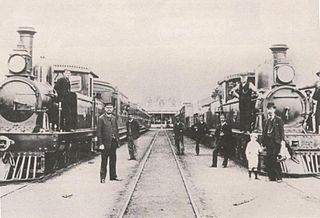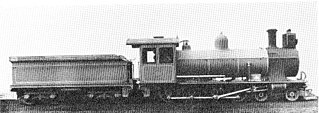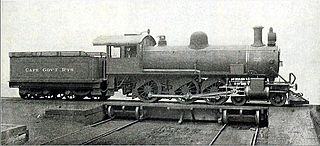Type XD tender on CGR 6th Class of 1901 | |||||||||||||||||||||||||||||||||||
| |||||||||||||||||||||||||||||||||||
| |||||||||||||||||||||||||||||||||||
| |||||||||||||||||||||||||||||||||||
The South African type XD tender was a steam locomotive tender from the pre-Union era in the Cape of Good Hope.

The Union of South Africa is the historical predecessor to the present-day Republic of South Africa. It came into being on 31 May 1910 with the unification of the Cape Colony, the Natal Colony, the Transvaal, and the Orange River Colony. It included the territories that were formerly a part of the South African Republic and the Orange Free State.

The Cape of Good Hope, also known as the Cape Colony, was a British colony in present-day South Africa, named after the Cape of Good Hope. The British colony was preceded by an earlier Dutch colony of the same name, the Kaap de Goede Hoop, established in 1652 by the Dutch East India Company. The Cape was under Dutch rule from 1652 to 1795 and again from 1803 to 1806. The Dutch lost the colony to Great Britain following the 1795 Battle of Muizenberg, but had it returned following the 1802 Peace of Amiens. It was re-occupied by the UK following the Battle of Blaauwberg in 1806, and British possession affirmed with the Anglo-Dutch Treaty of 1814.
Contents
- Manufacturer
- Characteristics
- Locomotives
- Classification letters
- Modifications and rebuilding
- Modifications
- Rebuilding
- References
The Type XD tender first entered service in 1901, as tenders to the British-built of the three versions of 6th Class4-6-0 Tenwheeler type steam locomotive which were acquired by the Cape Government Railways in that year. These locomotives were designated Class 6H on the South African Railways in 1912. [1] [2] [3]

The Cape Government Railways (CGR) was the government-owned railway operator in the Cape Colony from 1874 until the creation of the South African Railways (SAR) in 1910.

The South African Railways Class 6H 4-6-0 of 1901 was a steam locomotive from the pre-Union era in the Cape of Good Hope.


















